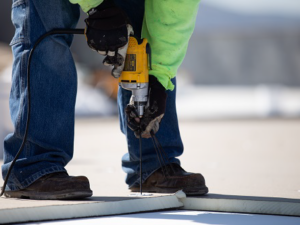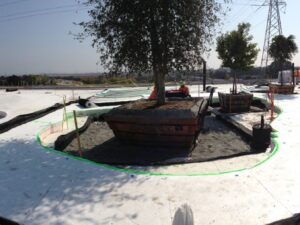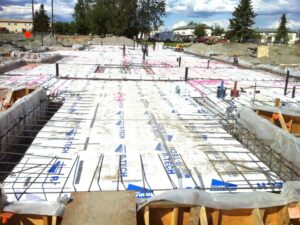 For both commercial and residential insulation upgrades, it’s recommended to shore up energy drains starting with the roof. However, a well-insulated roof doesn’t always translate to a well-insulated home. It is estimated that a lack of insulation for below-grade foundations, basement walls, crawlspaces and under slabs can account for around 20 percent of a building’s total energy loss. Reducing the amount of energy lost in all areas of a home can provide substantial savings on utility bills.
For both commercial and residential insulation upgrades, it’s recommended to shore up energy drains starting with the roof. However, a well-insulated roof doesn’t always translate to a well-insulated home. It is estimated that a lack of insulation for below-grade foundations, basement walls, crawlspaces and under slabs can account for around 20 percent of a building’s total energy loss. Reducing the amount of energy lost in all areas of a home can provide substantial savings on utility bills.
While it had been previously believed that soil could provide adequate insulation, as home designs and requirements push to be more sustainable, further emphasis is being placed on bolstering below grade insulation. With advanced insulation materials like expanded polystyrene (EPS) and extruded polystyrene (XPS), homes can help stabilize interior temperatures with lower energy requirements. The following explains not only why soil is an inefficient solution for below slab insulation but also how these two rigid foam insulation materials compare to each other.
The dirt on below grade insulation
While soil is readily available and can seem like an adequate insulator, homeowners have better options. At 20 percent moisture content, soil provides an R-value of only 0.25 – 1 per inch. It should be noted that this value decreases as the moisture content increases. Further, most basements extend above the soil, creating gaps in insulation that act as thermal bridges.
Rigid foam insulation, like EPS and XPS, provides substantially higher resistance to heat flow than soil. For instance, EPS rigid foam provides exceptionally stable R-values without degrading over time. This means that an inch of InsulFoam EPS provides substantially higher resistance to heat flow than multiple inches of soil. Rigid foam can also provide continuous insulation across the building envelope. This translates to a more energy-efficient home by reducing gaps in insulation and risks of thermal bridging.
It may be tempting to dismiss these differences because there are potentially miles of soil beneath a foundation. However, it should be noted that the insulating soil will likely be lower than interior temperatures. Placing a layer of rigid foam insulation can act as a thermal break, helping regulate interior home temperatures. For this reason, rigid foam can be a better solution than soil for addressing below grade insulation challenges.
Which residential insulation material provides the best R-values?
Determining the best rigid foam insulation is more complicated than looking into initial R-values alone,  especially in below grade insulation projects. While XPS has an initially high R-value of 5 per inch, it is not stable and will degrade over time. Because XPS can absorb moisture (like soil), its R-value can drop substantially over its service life. On the other hand, EPS maintains its stable R-value to provide homes with long-lasting below slab insulation.
especially in below grade insulation projects. While XPS has an initially high R-value of 5 per inch, it is not stable and will degrade over time. Because XPS can absorb moisture (like soil), its R-value can drop substantially over its service life. On the other hand, EPS maintains its stable R-value to provide homes with long-lasting below slab insulation.
In fact, Stork Twin City Testing, an accredited independent testing laboratory, examined sheets of EPS and XPS removed from a side-by-side installation after 15 years in service on a below-grade foundation in St. Paul, Minnesota. The researchers found that due to XPS’ water absorption, it lost 52 percent of its initial R-value, providing an approximate R-value of 2.4. For high moisture environments like basements and below slab applications, choosing XPS can lead to a less efficient built environment over time despite its initially high R-value.
In that study, EPS’ R-value remained relatively unchanged, proving the material could offer both commercial and residential insulation projects premium performance year after year. Further, given that EPS rigid foam insulation has the highest per dollar R-value when compared to other options, it can also be a cost-effective solution for below grade insulation.
For below grade insulation, material matters
The push for more sustainable building practices is likely to become both more commonplace and more stringent as the clock ticks closer to 2030—a key marker for carbon neutrality. Also aiding this drive is the recently passed Inflation Reduction Act, which can give homeowners tax credits for upgrading their insulation. With these initiatives in mind, it is important to incorporate long-lasting insulation materials throughout a building, from roof to under slab.
Check out how the exceptional performance of Insulfoam below grade insulation products can meet your project’s requirements.





